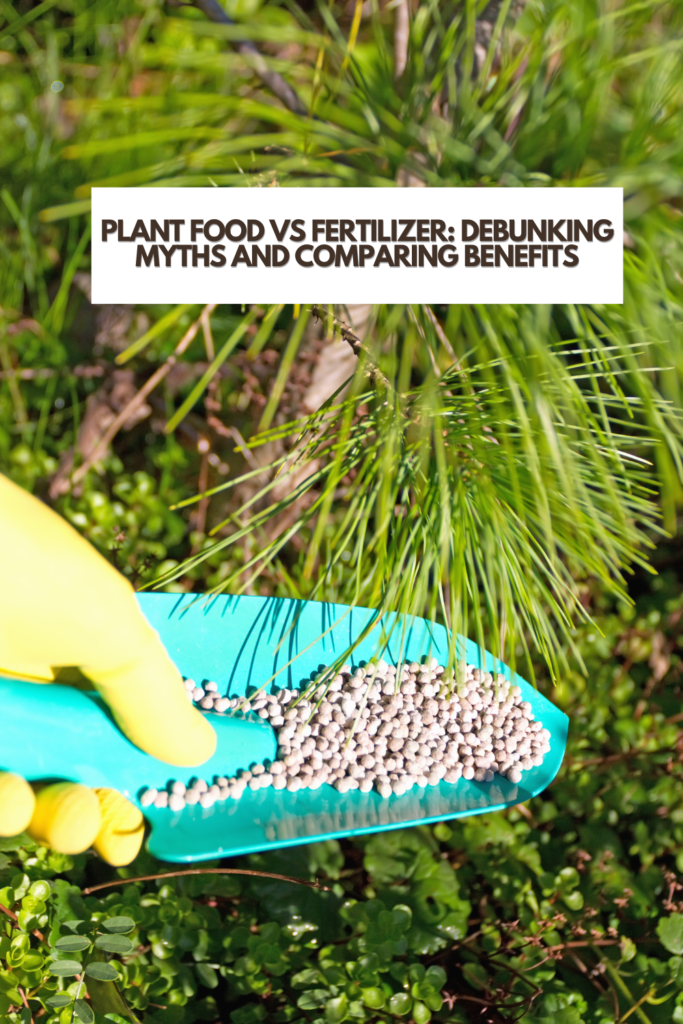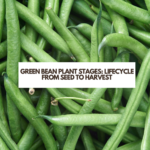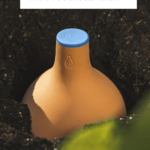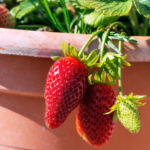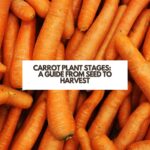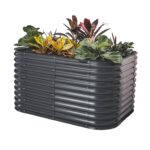Are you wondering what’s the difference between plant food vs. fertilizer? The world of gardening and plant care often involves choosing between the use of plant food and fertilizer.
Understanding the differences, benefits, and drawbacks of these substances, and even how much fertilizer to use can greatly impact the overall health of your plants. In this article, we will be delving into these key differences and exploring the roles that plant food and fertilizer play in promoting plant growth and vitality.
FTC DISCLOSURE: Some of the links in this post are affiliate links. If you click on them and make a purchase, I will receive a small finder’s fee on the sale. This does not increase your price in any way shape or form. Using these links help support the continuation of this website. All opinions are my own. Thank you in advance.
Plant food and fertilizer are terms often used interchangeably, but they are not always the same. While both substances provide essential nutrients to plants, they differ in composition, application, and how they interact with the soil. Establishing a clear understanding of these differences will allow you to confidently select the best option for the needs of your plants and soil conditions.
Key Takeaways
- Plant food and fertilizer differ in composition and application, impacting plant growth and vitality
- Essential nutrients promote plant health in various ways depending on their interaction with the soil
- Careful consideration is needed when choosing the appropriate substance for specific plant needs
Understanding Plant Food and Fertilizer
When it comes to providing essential nutrients for a healthy and thriving plant life, we often come across terms like plant food and fertilizer. It’s essential to understand their role, different types of fertilizers, and how to use them effectively for optimal growth. This is the same for a houseplant fertilizer, lawn fertilizer, or one for your garden soil.
Plant food is a term generally used to describe any substance that supplies plants with essential nutrients. Fertilizers, on the other hand, are commercial products specifically formulated to deliver these nutrients in various forms. There are two primary categories of fertilizers: organic and synthetic.
Organic fertilizers are derived from natural sources and organic material such as animal manure, compost, and bone meal. They break down slowly, releasing nutrients gradually for better absorption by the plant roots. Examples of organic natural fertilizers include:
- Compost
- Manure
- Blood meal
- Bone meal
Synthetic fertilizers are man-made using chemical processes, designed to provide precise nutrient ratios to the plants. They release nutrients quickly but may not be as environmentally friendly. Some common synthetic fertilizers are:
- NPK fertilizers (Nitrogen, Phosphorus, and Potassium)
- Water-soluble fertilizers
- Slow-release granular fertilizers
Fertilizers typically come in two main forms: liquid and granular. Liquid fertilizers can be added directly to the water, making them easily absorbed by the plants. They offer quicker results, but their effect is often short-lived. Granular fertilizers are solid and can be scattered over the soil or mixed into it. They break down slowly, providing a gradual release of nutrients.
YOU MIGHT ALSO LIKE TO READ:
Best Fertilizer for Hydrangeas
It’s important to consider both macronutrients and micronutrients when choosing the right fertilizer. Macronutrients, such as nitrogen (N), phosphorus (P), and potassium (K), are required by plants in large amounts. Micronutrients, like iron, manganese, and zinc, are needed in smaller quantities but are just as crucial for proper growth.
Plant nutrients can be divided into two types: essential and non-essential. Essential nutrients are those that plants cannot produce, and they must obtain from the soil or nutrient solutions. These include macronutrients and micronutrients mentioned above.
Commercially available fertilizers come in varying nutrient ratios and formulations, catering to specific needs of different plant species. Understanding the particular requirements of the plants you are growing helps in selecting the right fertilizer. Always be aware of the type of plant, and type of fertilizer you’re using on your garden plants.
Key Ingredients in Plant Food and Fertilizer
Macronutrients
Macronutrients are essential elements that plants need in large amounts for growth. The main macronutrients are nitrogen(N), phosphorus (P), and potassium (K), often referred to as N-P-K ratio in plant foods and fertilizers. These elements are vital for various plant functions, such as nitrogen for foliage, phosphorus for roots, and potassium for overall plant health. Understanding this will help tend to the plant’s needs.
In addition to N-P-K, secondary macronutrients include calcium (Ca), magnesium (Mg), and sulphur (S). These elements play crucial roles in plant processes, such as:
- Calcium for cell wall structure and strength
- Magnesium as a component of chlorophyll, essential for photosynthesis
- Sulphur for producing proteins and enzymes
Micronutrients
Micronutrients are essential elements that plants need in trace amounts. Some of the key micronutrients include iron (Fe), zinc (Zn), copper (Cu), chlorine (Cl), manganese (Mn), boron (B), molybdenum (Mo), nickel (Ni), and cobalt (Co). Despite being required in smaller quantities, micronutrients are equally important to plant health, contributing to enzymatic reactions, photosynthesis, and overall plant growth.
For example:
- Iron helps with chlorophyll formation and electron transfer in photosynthesis
- Zinc activates various enzymes and helps with chlorophyll production
- Copper is involved in photosynthetic electron transfer and other enzymatic processes
YOU MIGHT ALSO LIKE TO READ:
Using Vinegar To Acidify Blueberry Plants
Additional Ingredients
Other essential components of plant foods and fertilizers include water (H2O) and oxygen (O2). Water is crucial for the transportation of nutrients within the plant and supports various biological processes. Oxygen is necessary for photosynthesis and cellular respiration, transforming inputs such as water, carbon dioxide, and sunlight into energy that can be used for growth.
In addition to these elements, carbon dioxide (CO2) plays a vital role in photosynthesis and is often provided by the natural air and soil surrounding plants. Some fertilizers and plant foods may also contain beneficial microorganisms or growth stimulants to enhance nutrient availability and uptake through the plant’s cell walls.
By providing plants with the appropriate balance of macronutrients, micronutrients, and additional ingredients, we can support their optimal growth and development.
How Plants Use Nutrients
Nutrients play an essential role in maintaining plant health and development. In this section, we’ll discuss the significance of these nutrient levels and their role in critical processes such as photosynthesis, growth, and overall plant development.
Photosynthesis is a fundamental process that allows plants to harness energy from sunlight and use it to produce glucose, a simple sugar. This process occurs in chlorophyll-containing structures called chloroplasts, which are found in the plant cells. Glucose is then used to create amino acids, which are the building blocks for proteins necessary for various growth and maintenance functions.
Roots are the primary means through which plants absorb nutrients, such as nitrogen, phosphorus, and potassium, from the soil. These nutrients are vital for healthy growth, leaf development, and foliage growth. Nitrogen, for example, is essential for green leafy growth and the formation of amino acids. Phosphorus ensures strong root development and supports the plant’s energy transfer processes, while potassium helps in regulating water usage and enables proper functioning of stomata (pores) in the leaves.
To ensure healthy growth, it’s essential to maintain an adequate balance of nutrients and minerals in the soil. An optimal balance allows the plant to produce sufficient sugars and amino acids required for healthy growth and development. Adequate nutrient availability also ensures proper formation of chlorophyll, which is not only crucial for photosynthesis but also serves as a vital component in the plant’s defense mechanisms against diseases and pests.
When we provide plant food or fertilizer to our plants, we’re supplementing the naturally available nutrients in the soil with additional essential elements. This supplementation ensures plants have access to the nutrients they need in the right proportions, promoting strong root growth, lush foliage, and better overall plant health. By understanding the role of nutrients in plants, we can confidently support their growth and ensure they thrive in our care.
The Importance of Soil in Fertilization
When talking about plant food and fertilizers, it is vital to understand the importance of soil in the process of fertilization. Soil not only serves as a medium that anchors plant roots but also supplies the essential nutrients and air required for healthy growth.
In order to promote successful fertilization, we must consider various soil properties such as soil pH, soil texture, and the presence of soil additives. Soil pH determines the acidity or alkalinity of soil, and it greatly affects the availability of nutrients for plants.
Most plants grow well within a soil pH range of 6.0 to 7.0, as this level allows for an optimal mix of nutrients to be absorbed. However, some plants such as blueberries and azaleas prefer acidic soil with a pH below 6.0. Monitoring and adjusting soil pH levels based on the needs of the plants is crucial for successful fertilization.
Soil texture also plays a significant role in the fertilization process. There are three main soil textures: clay, sand, and silt. Clay soils have high nutrient and water-holding capacities but may suffer from poor drainage and aeration.
In contrast, sandy soils are well-drained but may lack essential nutrients due to low water and nutrient retention. To improve these soil types’ fertility, we must incorporate organic matter such as compost, which will add nutrients and improve the soil structure.
Additionally, soil additives can be used to enhance fertility and address specific issues. For instance, to maintain or improve soil pH, lime can be added to level up the pH in acidic soils, while sulfur can be used to lower pH in alkaline soils. Furthermore, other soil additives like gypsum can help to break up heavy clay soils and improve drainage, whereas the addition of organic matter can improve sandy soils’ nutrient and water retention capabilities.
Types of Fertilizer
Organic Fertilizers
Organic fertilizers are derived from natural sources such as plants, animals, and minerals. They provide essential nutrients to plants while also improving soil structure and fertility. Some common types of organic fertilizers include compost, bone meal, and manure.
Compost is made from decomposed organic matter, such as kitchen waste and yard trimmings. It is an excellent source of essential nutrients and improves the soil’s water-holding capacity, making it a popular choice among gardeners. Bone meal is created from crushed animal bones and is a rich source of phosphorus, essential for root development and fruiting.
A key advantage of using organic fertilizers is their release of nutrients in a slow and consistent manner, minimizing the risk of over-fertilizing, root damage, or fertilizer burn. However, it is a good idea to be mindful of the nutrient content and NPK ratio of these fertilizers to ensure plants receive the appropriate balance of nutrients.
Synthetic Fertilizers
Synthetic fertilizers, also known as inorganic or chemical fertilizers, are manufactured using a chemical process. They come in various forms, such as water-soluble, slow-release, and granular. Synthetic fertilizers offer a concentrated and immediate source of nutrients, making them highly effective in stimulating plant growth.
Water-soluble fertilizers dissolve quickly in water and are absorbed rapidly by plants. However, they require frequent application due to their fast release of nutrients.
Slow-release fertilizers, on the other hand, gradually release nutrients as the granules break down, reducing the risk of over-fertilization and allowing for longer intervals between applications. Granular fertilizers are solid, slow-release particles that are easy to apply and provide a steady supply of nutrients.
While synthetic fertilizers offer quicker results, they can also lead to problems if not used correctly. Over-application of synthetic fertilizers can cause fertilizer burn, root damage, and environmental pollution due to nutrient runoff and won’t promote healthy plant growth.
Specialized Fertilizers
Specialized fertilizers are formulated to meet the specific nutritional requirements of particular plant types or conditions. These customized products are designed to ensure optimal plant growth and development, taking into consideration factors such as soil type, climate, and plant needs.
Some examples of specialized fertilizers include formulations for fruit-bearing plants, acid-loving plants, and flowering plants. These fertilizers might have a unique NPK ratio or contain additional micronutrients tailored to the specific plant’s requirements. While specialized garden fertilizers can be highly beneficial to targeted plants, they may not be suitable for other plant types and should be used with caution.
Benefits and Drawbacks of Using Fertilizers
Fertilizers play a crucial role in enhancing the growth and health of plants. We understand that fertilizers can significantly impact the germination, development, and overall well-being of plants. In this section, we will discuss the benefits and drawbacks of using fertilizers, focusing on their effects on plants, flowers, seeds, germination, fruits, duration, absorption rate, and water absorption.
One of the primary benefits is the improved growth rate. Fertilizers provide essential nutrients such as nitrogen, phosphorus, and potassium that are vital for plant growth. These nutrients help increase the absorption rate of water and other minerals, thus boosting the overall growth and development of plants, flowers, and fruits.
Fertilizers also increase the duration of the growing season. They improve the health and vitality of seeds, leading to better germination and faster growth of plants. This means a more substantial yield of fruits and flowers, ultimately benefiting gardeners and farmers.
However, there are drawbacks to using fertilizers. Overuse can lead to negative effects on plant health. Excessive application may disrupt the natural balance of nutrients, causing plants to grow too quickly, resulting in weak and susceptible plants. This can also reduce water absorption, causing damage to plants during times of drought.
Additionally, there can be negative environmental consequences. The excessive use of fertilizers can contribute to water pollution through runoff into nearby water sources, which can harm aquatic life and pose health risks to people.
Choosing the Right Fertilizer for Your Plants
When it comes to plant care, one of the most crucial elements is providing the appropriate nutrients for growth. Both indoor and outdoor plants require specific types and levels of fertilizers to flourish. The key lies in selecting the right fertilizer for your plants, whether they are houseplants or part of your gardening endeavors.
For a successful growing season, we recommend conducting a soil test to determine the nutritional deficiencies, if any, in the soil. This helps in identifying the precise nutrients your plants require and aids in selecting a fertilizer that caters to those needs. For instance, a soil test may reveal the need for a fertilizer that is high in nitrogen for leafy indoor plants, while outdoor flowering plants may need a phosphorus-rich fertilizer to encourage blooms.
Every plant has individual nutrient requirements, and these may differ between indoor and outdoor plants. When it comes to houseplants, they typically prefer a more gentle, diluted fertilizer than outdoor plants, as their growing conditions are more stable and consistent. A balanced slow-release fertilizer, usually in the form of granules, spikes, or pellets, is an ideal choice to steadily nourish indoor plants. It’s important to follow package instructions and avoid over-fertilizing, which can lead to issues such as salt buildup or leaf blight.
Outdoor plants, on the other hand, thrive in more diverse conditions. To cover their nutritional needs, try a combination of slow-release and fast-release fertilizers. Simple granular product complete fertilizer provide quick nutrients, while organic amendments such as compost and well-rotted manure provide long-lasting sustenance for your growing plants. Another option is to incorporate specially-formulated liquid fertilizers, which are easily absorbed by the roots and provide quick results.
In summary, choosing the right fertilizer for your plants is essential for maintaining their health and vibrancy. By understanding the specific needs of indoor and outdoor plants and conducting a soil test, you’ll be well-equipped to select the most suitable fertilizer for a flourishing growth season.





